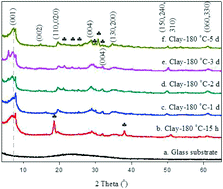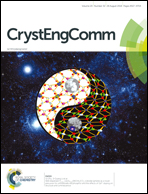Direct growth of lithium magnesium silicate nanotubes on a glass slide
Abstract
A novel, facile, one-step hydrothermal method for the direct growth of lithium magnesium silicate (hectorite) nanotubes on a silicate glass slide has been developed. Due to the surface tension induced by lattice defects, the initially synthesized two-dimensional hectorite nanosheets were spontaneously cured in situ thereby forming nanotubes with external diameters of around 100–200 nm and lengths of several micrometers on a glass slide substrate under hydrothermal conditions. This is totally different from those prepared from the conventional hydrothermal method that employs various water colloidal materials as the silicate source. The characterization results suggest that the use of a bulk substrate glass slide and alkaline conditions are the two key points for obtaining tube-like synthetic hectorites with a high intensity of surface negative charges. The calculated band gap of hectorite nanotubes is 3.16 eV by diffuse reflection spectroscopy (DRS), which is much narrower than that of hectorites sheets. Furthermore, under the same measurement conditions, the ionic conductivity of synthetic hectorites increases with its curling up degree, which is mainly attributed to the intensified concentration and accelerated mobility of carriers, as supported by the zeta potential results.



 Please wait while we load your content...
Please wait while we load your content...